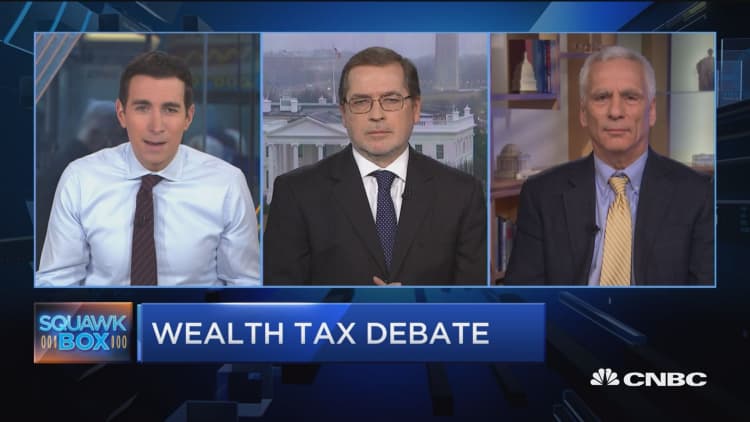National debt for the first time passed $22 trillion this week — a big, scary number that really doesn't pose much of a danger now but threatens to in the future.
The collective IOU had been rising steadily for decades but took a sudden leap in the years after the financial crisis as the government opened the financial spigots in an effort to spur growth.
President Barack Obama's administration racked up nearly as much debt in eight years than in the entire 232-year history of the country before he took office. He entered with $10.6 trillion in total debt and left with the country owing $19.9 trillion. That's an average tab of $1.16 trillion a year.
Under President Donald Trump, the debt also has climbed. The $2.06 trillion increase works out to about $991 billion a year, or slightly less than the pace Obama had set.

There are two more relevant metrics, though, when thinking about national debt.
One is the percentage of debt as compared to gross domestic product. That's an important measure because it gauges both the ability of the government to pay its tab through growth, and because it helps measure bang for the buck in terms of how much growth the debt has helped generate.
Total debt compared to the economy remained pretty low for decades until it began to climb in the early 1980s while President Ronald Reagan fought the Cold War against the former Soviet Union.
Debt to GDP was about 30.6 percent when Reagan took office in 1981, then steadily climbed to a peak of 65.3 percent in mid-1995, according to data from the St. Louis Federal Reserve. Then-President Bill Clinton and the Republican-controlled Congress eventually carved out a short-lived government surplus, resulting in less of a need to borrow and the level to fall to 30.9 percent in the second quarter of 2001.
From there, borrowing to finance two wars along with two recessions sent debt to GDP to 77.3 percent by the time Obama took office. When Obama left, the level had risen to 103.6 percent.
Under Trump, there's been only a small uptick in that regard, with the level standing now at 104.1 percent.
The other relevant metric is debt held by the public, which parses out "intragovernmental holdings," or money the government borrows to operate from its various trust funds like Social Security and Medicare.
That figure, too, began to rise in the early 1980s, from less than $1 trillion to its current $16.2 trillion. In the Obama years alone, it surged from $6.3 trillion to $14.4 trillion.
In debt-to-GDP terms, the public debt rose from 75 percent when Trump took office to 76.4 percent as of the third quarter of 2018. As a contrast, that level rose from 47.5 percent at the start of Obama's term to 75 percent when he left.
The future, though, is what has many economists concerned.
The most recent projections from the nonpartisan Congressional Budget Office indicate that debt held by the public will rise to 93 percent of GDP in the next 10 years, or the highest since just after the end of World War II. From there, the level is expected to hit 150 percent by 2049, which is well above what economists consider a sustainable level.
Moreover, should current tax policies stay in place, rather than sunset as they are designed to do, the debt burden will get even worse.
The main culprit of public debt is budget deficits, which have surged under Trump though the CBO now expects the shortfall to be a cumulative $1.2 trillion less than previous projections. The office estimates that annual deficits will start topping $1 trillion in 2022, from an estimated $900 billion in fiscal 2019.
The Trump administration has said economic growth will pay for the added debt and deficit burden, but so far that hasn't been the case despite the fastest GDP gains of the recovery.


